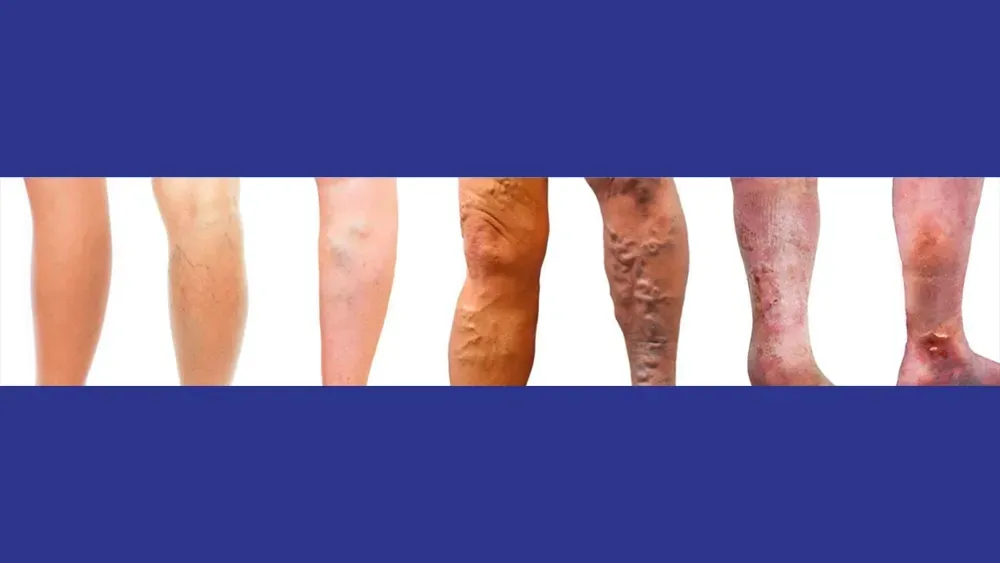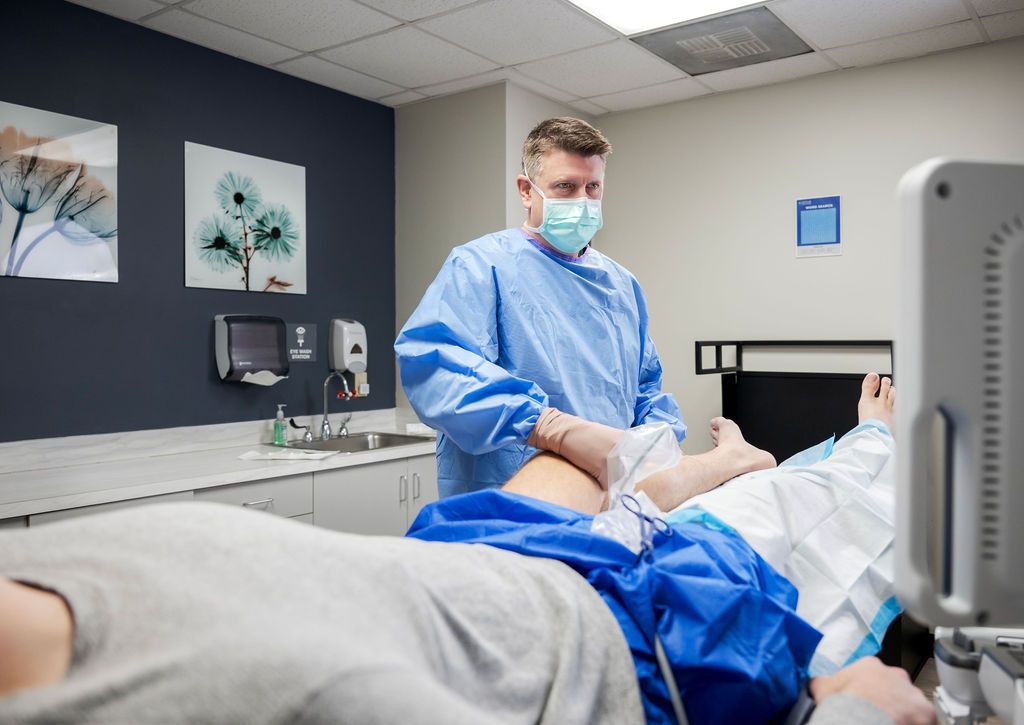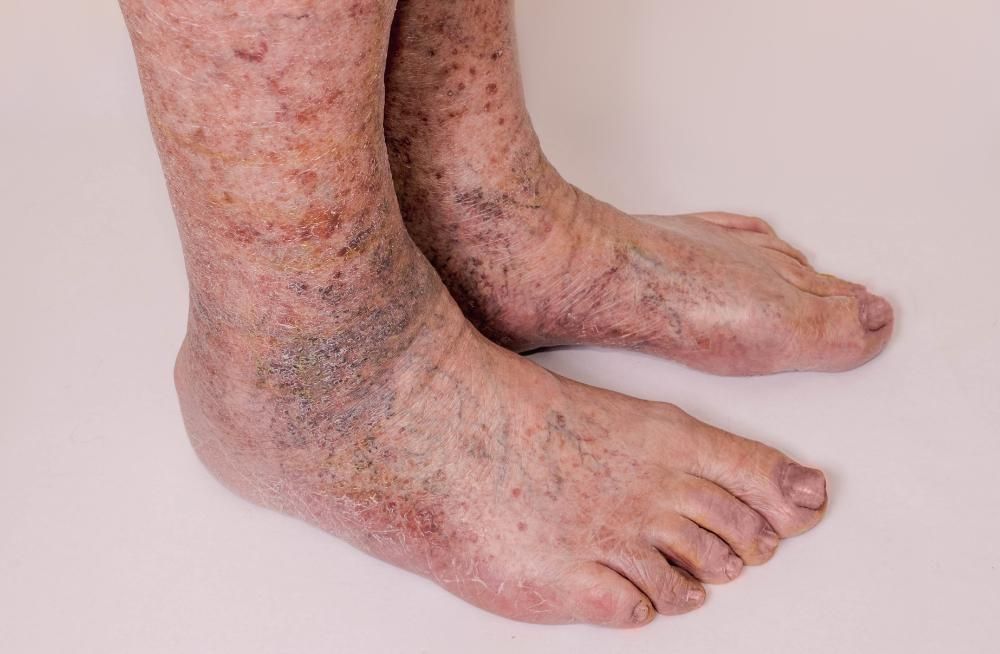Hmmm... Do I have a vein problem?
A large segment of the adult population experiences aching, cramping, or tired legs. Many people with leg symptoms are unaware they might have a common vein condition, called venous reflux. If you have bulging veins that pop out it’s normally fairly self-evident you may have an underlying vein problem. But if you don’t have visible veins it’s difficult to know what’s going on. Quite often vein problems aren’t even on the radar.
The leg veins are a series of connected pipes that carry blood back to the heart. Within the veins small flaps of tissue act as one-way valves, that allow blood to flow in the right direction (“North”) but prevent blood from flowing in the wrong direction (“South”).
When the vein valves aren’t working properly it creates back-pressure, which can result in a variety of leg symptoms. Common symptoms include bulging varicose veins, spider veins, aching/tired legs, leg cramps, and ankle swelling. Some people with venous reflux will develop phlebitis, a condition that occurs when veins have become inflamed, tender, red, and tender. Over time some people develop brown skin discoloration, and sometimes wounds can develop just above the ankle.
VARICOSE VEINS VS SPIDER VEINS
Varicose veins are abnormally dilated veins located close to the skin surface that measure more than 3mm in diameter. Spider veins are smaller skin surface veins that measure less than 1mm in diameter.
Both spider veins and varicose veins can be asymptomatic or result in symptoms such as burning discomfort, tingling, and tenderness. Both can create cosmetic concerns.
The treatment of spider veins is typically predicated on sclerotherapy (injection of medicine into the vein) or cosmetic laser (which zaps and eliminates the spider veins).
The treatment of varicose veins depends on the size and location of the veins. Sometimes varicose veins can be treated with foam injection, but larger veins are sometimes best treated with vein removal (phlebectomy).
If you’re living with leg symptoms that are anything more than mild or intermittent, you may be living with those symptoms needlessly.
VEINS VS ARTERIES
Veins are the pipes (blood vessels) that return blood to the heart and lungs. Arteries are the pipes (blood vessels) that carry oxygen-rich blood from the heart to all areas of the body. Vein problems and artery problems manifest in different ways. Vein problems tend to cause swelling, but also cause symptoms of heaviness, early leg fatigue, and throbbing discomfort. These symptoms are commonly exacerbated by prolonged standing or prolonged sitting. In contradistinction, artery problems in the legs tend not to cause leg swelling but tend to cause leg pain that is exacerbated by walking, and sometimes discoloration or sores on the toes.
BEST VEIN SPECIALIST NEAR ME
My name is Dr. Ford. I work at Vascular Solutions, a vein practice located at the Arboretum in south Charlotte. I’m a board-certified vascular surgeon and consider myself an expert in the field of vein care. I’ve performed thousands of vein procedures, published multiple articles in surgical journals and textbooks, and served as an assistant professor at UNC-Chapel Hill's surgery department for 7 years. I continue to train physicians across the region on advanced vein procedures. Every day I strive to be the best vein doctor in Charlotte.
The most common condition I treat is venous reflux, a condition caused by “leaky” valves in the leg veins. When someone has leaky vein valves increased backpressure causes symptoms such as aching, throbbing legs, leg cramps, leg restlessness, and early leg fatigue. Most of the time people cannot recall exactly when their symptoms started, as the condition tends to slowly evolve over months to years.
One of the challenges I face daily is how to provide “just the right amount” of information to each patient. I’ve found that most people are fairly happy to get a basic overview of the condition, but some people need all the details. I find myself spending a lot of time explaining vein problems and educating patients. I believe that if I can explain the condition in a way that makes sense, it becomes easier to outline the pros and cons of different treatment options.
MULTIPLE GREAT OPTIONS
One of the most common procedures I perform is radiofrequency ablation, also known as Closurefast. This procedure involves sealing the bad vein using a thin catheter that’s temporarily inserted into the target vein. This walk-in, walk-out procedure is performed in our office using local anesthetic. There’s no need to go to the operating room or hospital. The procedure is quick and easy and usually takes about 15-20 minutes.
An alternative to cauterizing the vein is to seal the bad vein using a polymer adhesive called VenaSeal, or using an injectable foam solution like Varithena to seal the bad veins.
BARRIERS TO CARE
Probably the biggest barrier to care is educating the public about this common condition. I’ve dealt with countless patients who have told me never even considered they may have a vein problem, and wish they’d known years ago.
On the other end of the spectrum, some people with confirmed vein problems are reluctant to get the veins treated... Probably the most common reason is concerns about the cost of treatment, but more often the reason is fear of complication or fear of pain. Fortunately, we now have multiple low-risk, painless methods for fixing the veins that weren’t previously available.
If you’re experiencing leg symptoms, such as aching, throbbing, early leg fatigue, leg cramping, leg swelling, or if you have symptomatic bulging varicose veins, you’re a candidate for getting your leg veins evaluated. Not everyone with leg symptoms has vein problems, and there’s a variety of other medical conditions that can cause leg pain. That’s another reason to seek out an experienced specialist who’s equipped to accurately diagnose the underlying problem.
At our practice, we invite patients with leg symptoms to attend a new patient consultation. During this visit, an ultrasound of the leg veins is performed, which allows identification of vein problems, and provides a “road-map” of the vein anatomy. We review the ultrasound findings and outline the pros and cons of any procedural options. By combining the diagnostic ultrasound and the new patient consultation in one visit, you leave with a diagnosis and a treatment plan.
There are millions of people in the USA who have vein problems. With vein problems being so common there's lots of opportunity for me to help people.
THE AUSTRALIAN CONNECTION
Having grown up in Melbourne, Australia, I like to place small reminders of my Australian roots around our office. One photo, that I’m especially proud of, features two mother kangaroos, each with joeys in their pouches, chilling out on a grassy field. I took this photo in a field adjacent to my back yard in Australia!
Another awesome photo (taken by my wife, Katie) that we display in our office features a koala hanging out in the nook of a tree.
Although I don’t have aboriginal blood, I have great respect for the plight of the Australian aborigines. I do what I can to draw attention to their struggles. My wife Katie incorporated the aboriginal symbol for “journey” into our company's logo to reflect my career path. The 4 dots reflect the stepping stones of my winding journey, starting at Monash University School of Medicine, followed by my residency at the State University of New York-Buffalo, then my fellowship at UNC-Chapel Hill, and now our practice here in Charlotte.
SHARE:




